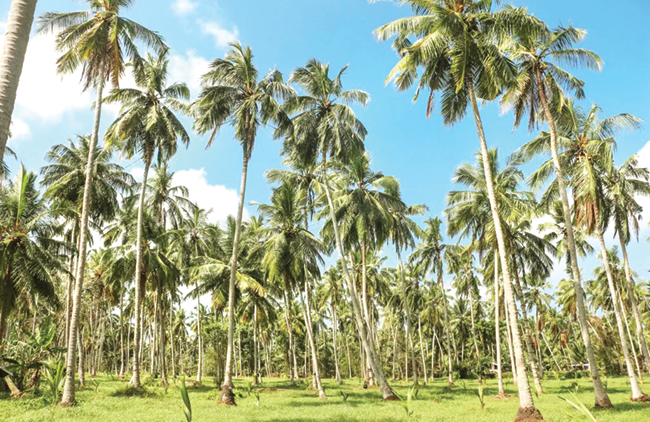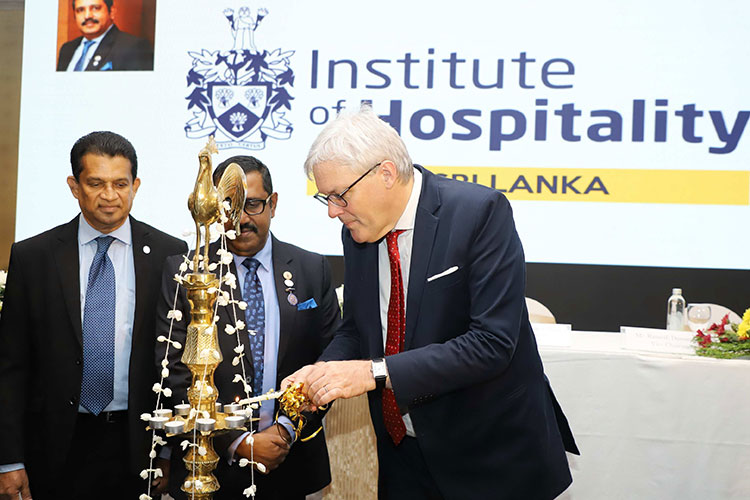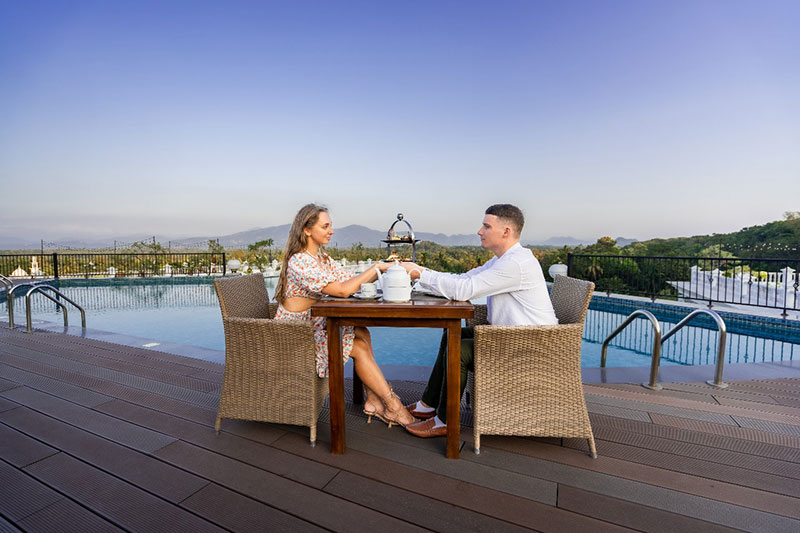Life style
In Sri Lanka,This Centuries – Old Spirit Is Shaking up The Local Cocktail Scene
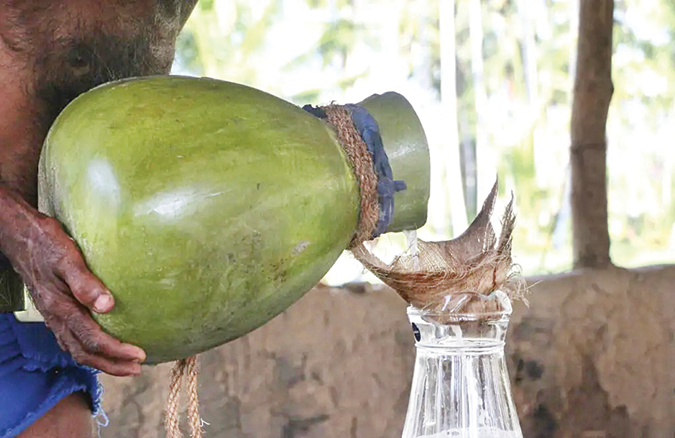
And being served in trendy bars from London to Cologne
By Zinara Ratnayake
At an 18-acre coconut garden of Rockland Distilleries in Nattandiya, just north of Sri Lanka’s capital Colombo, Roy Jayalath begins his work early in the morning. Jayalath climbs tall, swaying coconut trees to collect the white, milky sap of their flowers. Balancing on two coir ropes, he walks across these tightropes from tree to tree until he collects enough sap to fill a pot. Coconut sap is the raw material for coconut arrack, an alcoholic beverage unique to Sri Lanka. Although this method of collecting sap, known as toddy tapping, has existed in Sri Lanka for about 2,000 years, arrack has only recently begun to reach trendy bars and foreign shores.
High-quality coconut arrack only has two ingredients: sap and water. When it’s fresh from the tree, the sap is sweet, tangy, and slightly spicy, with a strong fragrance of coconuts; it contains natural sugars and yeast, allowing the sap to naturally ferment into a wine-like drink called toddy, with an alcohol percentage of about four percent. A few hours after extraction, the alcohol content increases to about seven percent. The toddy is then distilled like whiskey; the alcohol level goes up to about 60 percent, at which point the drink is then watered down to 40 percent and aged in Halmilla (a tree that grows in Asian tropics) wooden vats for at least three years before the liquid is bottled.
The garden employs six “toddy tappers” including Jayalath, now 56, who tapped his first toddy at the age of 13 after seeing his two uncles climbing coconut palms. Jayalath shimmies up the trees twice a day now: once in the morning to collect sap, and again later in the day to tap each tree’s unopened inflorescence, or cluster of flowers, with a mallet to stimulate toddy flow. He collects sap from 100 trees every day.
Rapti Dirckze, Head of Conservation at Rockland Distilleries, explains that toddy tapping is a generational craft passed down from father to son, but notes that it’s difficult to find young tappers today—despite the fact that a skilled tapper can earn decent pay of about 120,000 rupees ($470) a month. “People think it’s a job with low status, so the young generation wants to find other jobs,” she says.
Jayalath’s children, for instance, have moved into other labor work, he explains as he presses his palms together and says a prayer before ascending a tree. “[The prayer] keeps me safe,” he says, smiling. “The hardest part is to climb up. Most people think that walking on the rope is scary. Not for me. I’m used to it.”
There’s little evidence to suggest arrack’s origins, but according to oral history, centuries ago, toddy was given to elephants in the king’s army before battle. Robert Knox, a British sea captain who spent 19 years in Sri Lanka as a captive, wrote in his 1681-book An Historical Relation of the Island Ceylon that captives distilled arrack to drink. In the mid-1600s, the Dutch began the commercial planting of coconut trees on the west coast of Sri Lanka and exported coconut arrack to Malaysia and several Indian destinations.
“We call this area the toddy belt of Sri Lanka,” says Dirckze, noting that this region extends from Chilaw in the north to Matara in the south. “The best toddy is from here.”
Sri Lanka has had a complicated relationship with arrack over the past few centuries. When the British took over Sri Lanka’s coastal belt in 1796, they seized control of the arrack trade. Arrack production slowly declined over the following decades. There were many reasons for this, writes Michelle Gunawardana in the book The Adventure of Arrack: not only did importing countries impose heavy duties, but the British East India Company also later banned the transport of arrack and discouraged imports into Britain.
By the 1830s, the British had also tightened local production, ensuring that only licensed entities could produce and sell arrack. The British government later established the Department of Excise, which exists today, to control the illegal trade and allow only large-scale businesses to produce the drink.
Around the ‘60s to ‘70s, when the coconut supply decreased due to severe droughts and labor shortages, some distilleries began to produce different arrack blends. Because these usually didn’t include much coconut, they were much cheaper than traditional arrack. The prevalence of such alternatives labeled arrack as a cheaper drink for the masses, explains Dirckze.
According to Nadira Jayasuriya, director of development at the Botanik Bistro and Bar in Colombo, local distilleries like Rockland are driving much of this surge, and customers are spreading the word on social media. She believes the growing enthusiasm is a sign that people are becoming increasingly interested in embracing native ingredients.
“There’s a global trend to highlight everything local. The pandemic made it even clearer,” she says, explaining that COVID-related restrictions limited imports and drove people to pay more attention to locally available ingredients.
“Earlier, people wouldn’t come to a bar and order arrack, but now they do, even when we have whiskey or scotch on the menu,” says mixologist Dhanushka Dias, who developed the cocktail menu at ColomBar, an arrack-focused bar at Colombo’s Cinnamon Lakeside hotel.
ColomBar’s assistant restaurant manager Mischel Bandara agrees. “ColomBar began as a destination bar to introduce Sri Lankan elements like coconut arrack to foreign tourists,” he says, “but it became so popular with locals. People come and order arrack bottles now, not just glasses.”
Rockland now produces several coconut arrack varieties, including a new premium blend called Ceylon Arrack, which is a mix of three-year, seven-year, and 10-year aged arracks. The taste is clean and smooth, with a robust coconut aroma.
One cocktail Dias developed is called Dodola, made with Ceylon Arrack, coconut milk, jaggery, nutmeg, and cardamom. The flavour is reminiscent of the popular Sri Lankan sweetmeat dodol. “When I told customers that I have arrack cocktails, they were reluctant,” he recalls. “But I was confident. And I was right. They loved it.”
Dias also created a cocktail called Padikkama, which tastes similar to bulath wita, a local betel-leaf-and-betel-nut mix commonly eaten after meals. “My idea was to develop cocktails with local elements, and when I thought of the days I spent with my grandparents, I wanted to recreate those flavours,” he says.
Another factor contributing to the increasing attention around coconut arrack is the growth of tourism. “When foreigners come here, they don’t want to sip a Scottish or gin cocktail. They ask for something local, something that is ours,” Jayasuriya says. Botanik Rooftop Bistro & Bar serves two cocktails made with Ceylon Arrack, both featuring many locally sourced ingredients: one includes pandan, king coconuts, and kithul treacle (made with the sap of fishtail palm), while the other includes tamarind and passion fruit.
“We had no idea how customers would react, but they are our bestsellers now,” he says.
Mixologist Nabeel Kenny, who works at the upmarket restaurant Monsoon Colombo, also sees the demand for arrack among tourists. “Customers ask us whether we have arrack cocktails,” says Kenny, who is now also developing arrack-based cocktails.
The popularity of arrack is no longer limited to Colombo or Sri Lanka. Coconut arrack is now a crowd favourite in London, where the ingredient is served in cocktails at trendy South Asian restaurants like Hoppers London and The Coconut Tree. Even celebrity bartender Ryan Chethiyawardene, who was brought up in Birmingham by his Sri Lankan parents, uses the spirit in mixed drinks.
“Arrack, one of the oldest and almost forgotten spirits from my homeland, has a very special place in our bar,” says Indika de Silva, owner of the cocktail bar Toddy Tapper in Germany. His hope is to offer a “cultural taste journey” with flavours and ingredients that are lesser known to the German crowd. One of the bar’s most popular cocktails is Jack & Jill, which features Ceylon Arrack, cardamom, jackfruit, and calamansi, among other ingredients.
Despite historical impediments, Sri Lankan distilleries and mixologists are reclaiming their pride in the centuries-old tradition of coconut arrack—and redefining it in innovative ways. “When someone says Mexico, people think of tequila. I want the world to think of coconut arrack when they hear the name Sri Lanka,” says Dias, “It’s our history and culture blended in one drink. We must celebrate it.” (BBC )
Life style
Camaraderie,reflection and achievements

Institute of Hospitality Sri Lanka
 The 32nd Annual General Meeting (AGM) of the UK-based Institute of Hospitality’s Sri Lanka Chapter was held recently at the Ramada Hotel Colombo,.The event provided an evening of camaraderie , reflection of the past and present achievements,setting new benchmarks for the future
The 32nd Annual General Meeting (AGM) of the UK-based Institute of Hospitality’s Sri Lanka Chapter was held recently at the Ramada Hotel Colombo,.The event provided an evening of camaraderie , reflection of the past and present achievements,setting new benchmarks for the future
The AGM had the presence of two distinguished guests, the Chief Guest Opposition Leader Sajith Premadasa, and the Guest of Honour British High Commissioner to Sri Lanka, Andrew Patrick. Their inspiring speeches were lauded by all hoteliers who were present at the occasion
A special thanks was extended to Robert Richardson, CEO of the Institute of Hospitality UK, along with his team, sponsors, committee members, and all attendees for making the event memorable.
Dr. Harsha Jayasingh, Past President of the Institute of Hospitality (UK) Sri Lanka Chapter, emphasised the Institute’s longstanding history and the strength of its Sri Lankan branch. “The Institute of Hospitality (IH) UK has a history of 86 years, and we are proud to be the Sri Lanka Branch. IH Sri Lanka is much stronger now with many members from all areas of the hospitality industry,” he stated.
Dr. Jayasingh highlighted the significant role of tourism in Sri Lanka’s economy,. He said tourism it is the third-largest source of revenue for the country. “Tourism accounts for about 13.3% of total foreign exchange earnings and employs 450,000 people directly and indirectly. The hospitality industry in this island of pearl holds tremendous potential for economic growth, job creations, and cultural exchange,” he added.
He also pointed out more women should be attracted to the industry and advocated for the use of technology in hospitality sector to attract the younger generation.
The newly appointed Chairman Ramesh Dassanayake spoke about the challenges faced by the industry, including the reluctance of youth to join the sector. . Dassanayake expressed concerns over the migration of staff between hotels and the overall ‘brain drain’ in the sector. ” We must maintain high standards in the hotel We must try to attract tourists to Sri Lanka, we must have with many facilities Hence, hotel schools and other professional institutions involved in skills development mustincrease their intakes,” he pointed out.
Chief Guest Sajith Premadasa emphasised the importance of eco tourism and said “We need to have an environmental policy related to tourism in place,” . .
The 32nd AGM of the Institute of Hospitality UK, Sri Lanka Chapter, was a testament to the strength and potential of Sri Lanka’s hospitality industry. The insights and commitments shared during the event set a new benchmark for the future.(ZC)
Pix by Thushara Attapathu
Life style
He recognizes human identity beyond boundaries of gender, race, nationality and religion.
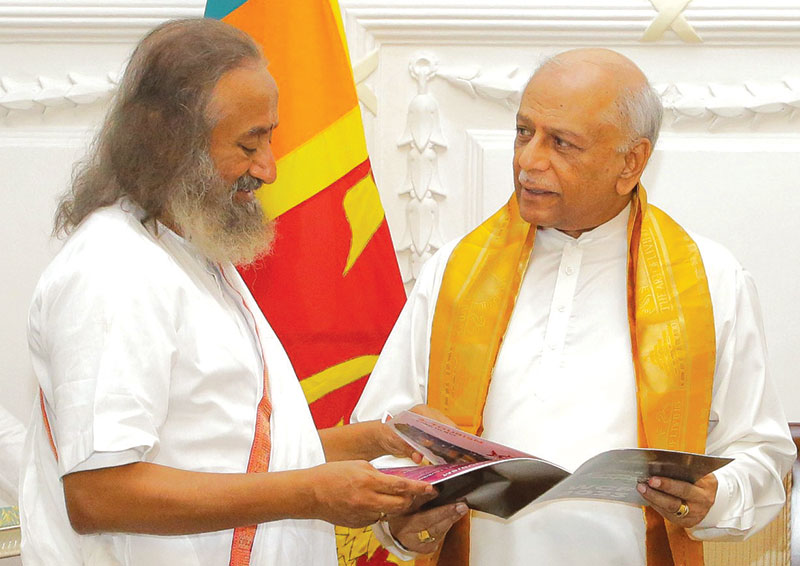
Visit of Sri Gurudev to Sri Lanka
Humanitarian, spiritual leader and Global Ambassador of Peace Gurudev Sri Sri Ravi Shankar (Sri Gurudev) was in Sri Lanka on a three day tour on the invitation of the Prime Minister of Sri Lanka Dinesh Gunewardene. Gurudev who inspired a wave of volunteerism and service to moot one of the largest volunteer-based organisations in the world – The Art of Living – visited the various projects under the aegis of the foundation and launched twelve vocational and technical centers around the island. He was accompanied by thousands of followers from Sri Lanka and around the world.
Gurudev who visited Sri Lanka for the sixth time also had a first day cover launched in honour of his visit. He is a strong proponent of spreading happiness, using the unique Sudarshan Kriya, yoga, meditation and practical wisdom to unite people, empower individuals and transform communities. His programmes provide techniques and tools to live a deeper, more joyous life, while his non-profit organisations recognize the human identity beyond the boundaries of gender, race, nationality and religion.
The Art of Living which has more than 30,000 teachers and over one million volunteers across 180 countries has touched in excess of five hundred million people around the world. CNN called it “Life Changing” and The Washington Post headlined it, “Fresh air to millions”.
In Trincomalee, Gurudev met with war victims and had a heartwarming engagement with the children from the children’s homes run by the Foundation. He also visited the Koneswara Temple in Trincomalee and graced the Kumbhabhishekam at Seetha ecogPnize the human identity beyond the boundaries of gender, race, nationality and religion. Amman temple at Nuwara Eliya. He held discussions with the trustees on the progress of the foundation’s social service projects, while also holding a special event – Ekamuthuwa – attended by a large number of dignitaries and his devotees from around the world.
His time with the Prime Minister was spent discussing the prospects of unity in diversity and uniting Sri Lanka by adding happiness into the formula of living. In addition he had discussions with the Speaker of the Parliament of Sri Lanka Mahinda Yapa Abeywardena, prominent business stewards and civil society leaders.
Life style
Bridal shows with opulence and luxury at The Epitome hotel in Kurunegala
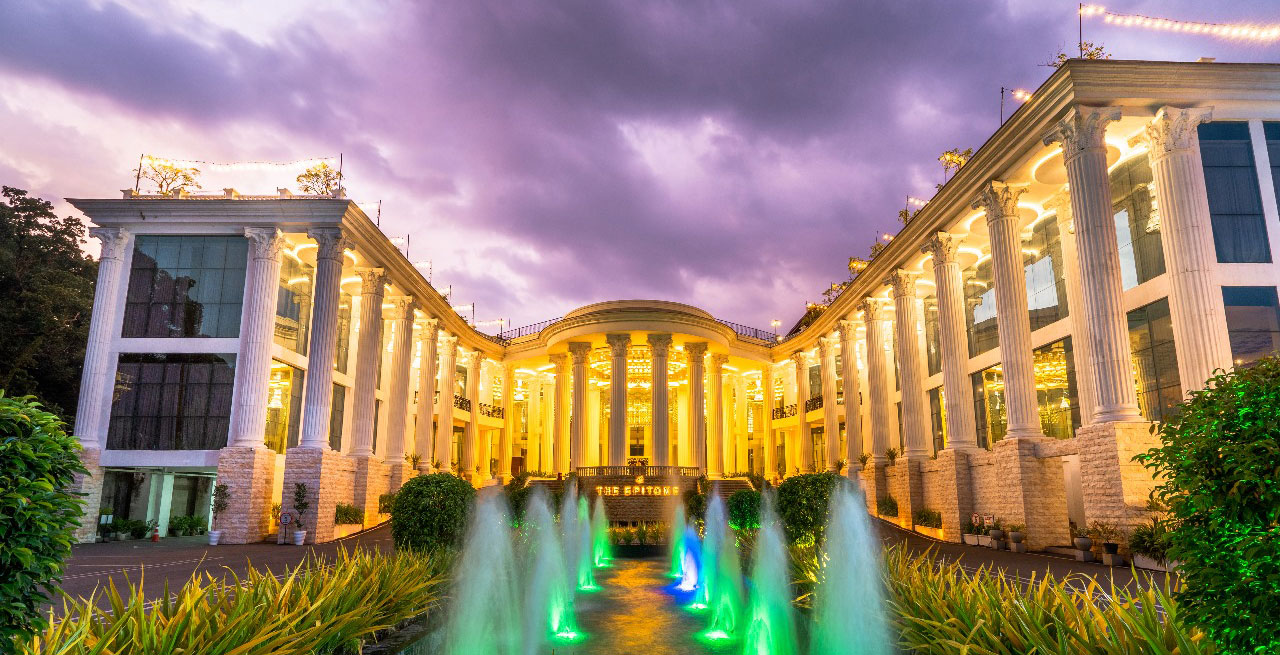
by Zanita Careem
Envison your dream wedding day come to life at the Epitome Hotel, a prestigious city hotel in Kurunegala offering an unrivalled luxury rendors experience for weddings.
The venue is designed to embody opulence and luxury from all quarters for a spectacular wedding in kurunegala,Thier ballroom is the largest banquet facility in Sri Lanka It can be divided into six luxurious pillarless wedding halls on the ground floor and 25pax smaller banquet halls.
It can be easily named as a five star heaven in the heart of the city contributing to a myriad of immense experiences tailored to inspire and delight wedding experiences.
From opulent décor set up to exquisite table decor, lavish food, every detail is meticulously curated to spark your imagination and ignite creativity for a perfect wedding. The previous prestigious wedding shows season one and season two attracted large crowds
were unique events which gave the wedding vendors and potential clients had an opportunity to connect and interact with each other. Beyond being a showcase it was a chance for the wedding vendors to unite and contribute to the vibrancy of the wedding industry. The wedding show covered all area of the bridal industry providing a comprehensive variety of bridal supplies from Sri lanka and became the most popular bridal exhibitions in Kurunegala.This bridal exhibitions allowed brides and grooms to experience first hand the products and services available from suppliers in Sri Lanka
These wedding shows held at The Epitome created a benchmark and gave an opportunity for vendors to create connections to the utmost satisfaction said Harshan Lakshita Executive Director. of the magnificent Hotel
Our wedding shows featured experts and professionals in every field‘ It covered all areas of the bridal industry provided a comprehensive variety of bridal supplies from Sri lanka and became most popular bridal exhibition in this region.We are always open to everyone to join us at our wedding shows in the future. It is an opportunity to discover the incredible talent within our local wedding and bridal vendors to make meaningful relationships and plan thier special day at our breathtaking hotel The Epitome said General Manager Kavinda Caldera
The Epitome Hotel’s bridal show which will be held end of June will buzz with great ideas,advice and inspiration for all those who plan thier dream wedding
…….
The Hotel Epitome’s Wedding Season 3 will marked excellence, celebration and inspiration for those in the wedding industry. The exhibition halls will resonate with ideas on exquisite bridal wear to decor, florists , photography etc and showshowcase the rich tapestry of talent within the local wedding industry. .



